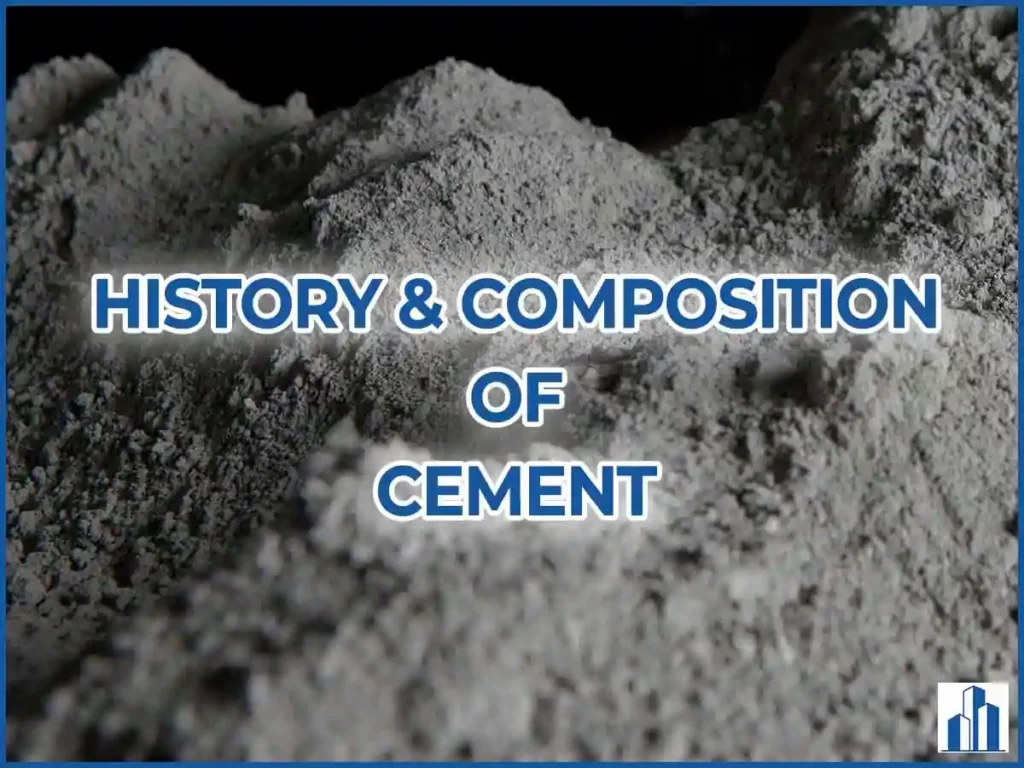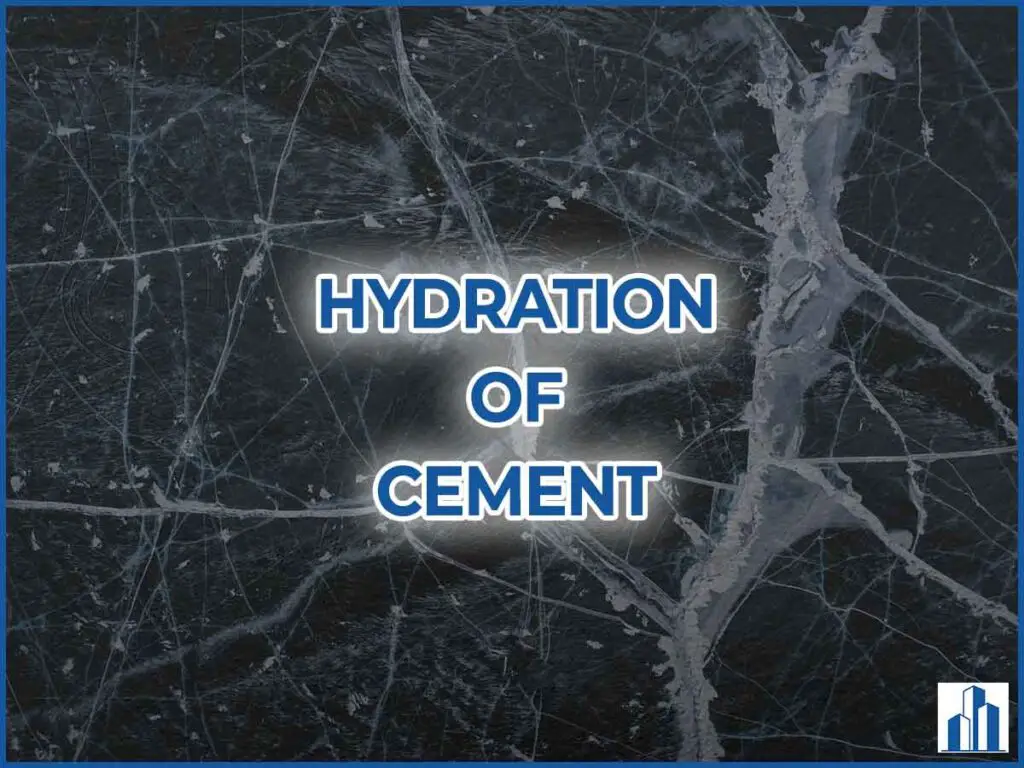Different types of cement exhibit different properties depending upon their chemical and physical characteristics like oxide compositions, fineness of grinding, etc. Various types of cement are produced to satisfy the need for usage in different situations. Various types of cement widely used in the construction industry are,
1. Ordinary Portland Cement (OPC)
OPC is the important and most common type of cement. Depending upon the strength of cement at 28 days, OPC is classified into 3 grades namely,
- 33 Grade
- 43 Grade
- 53 Grade
If the 28 days strength of the cement cube is not less than 33N/mm2, it is called 33-grade cement, if the strength is not less than 43N/mm2, it is called 43-grade cement, and if the strength is not less than 53 N/mm2, it is called 53-grade cement. In modern construction activities, higher-grade cement has become so popular that 33-grade cement is almost out of the market.
2. Portland Pozzolana Cement (PPC)
Pozzolanas are reactive siliceous and aluminous materials, which themselves possess little or no cementitious property. The most generally used pozzolanic material is fly ash.
PPC = OPC clinker + Pozzolana material (15-35%)
Uses
- Generates low heat of hydration
- Improves the workability and durability of concrete.
- It is economical and environmentally friendly.

3. Rapid Hardening Cement (RHC)
It develops strength early hence it is also known as High early-strength concrete. It can be achieved by,
- Higher C3S content
- Lower C2S content
- Finer grinding of clinker
Comparison of compressive strength,
1 day RHC strength = 3 days OPC strength
3 days RHC strength = 7 days OPC strength
Ultimate strength of RHC = Ultimate strength of OPC
Suitable to use in the following conditions,
- Early removal of formwork
- Emergency repair works
- Cold weather concreting
- Precast concrete construction
However, the Heat of Hydration is large, hence not suitable for Mass concrete constructions.
4. Extra Rapid Hardening Cement
Extra rapid hardening cement accelerates the setting and hardening process. It is manufactured by adding calcium chloride with RHC. The normal addition of calcium chloride should not exceed 2 percent by weight of the RHC.
This cement should be mixed, transported, placed, compacted, and finished within 20mins and the cement bag should not be stored for more than a month. It should not be used in prestressed concrete construction, as it may induce some initial corrosion.
The strength of extra rapid hardening cement is about 25 percent higher than that of rapid hardening cement at one or two days and 10–20 percent higher at 7 days.
Suitable to use in
- Cold weather concreting, because of high HOH.
5. Sulphate Resisting Cement (SRC)
When external sulphate ions ingress into the concrete, it reacts with calcium hydroxide, Ca(OH)2 to form Calcium sulphate, CaSO4. This CaSO4 then reacts with C3A present in the concrete and forms ettringite. Ettringite causes volumetric expansion which leads to cracking in concrete. This is known as a Sulphate attack.
SRC is obtained by,
- Lowering C3A & C4AF content
- Increasing C2S and C3S content
C3A content is limited to 5% and this cement has high silicate content.
Suitable to use in
- Sewage treatment works
- Marine structures
- Foundation works
- Canal linings etc.
6. Quick Setting Cement (QSC)
As the name indicates, this cement sets very quickly. The early setting property is brought out by reducing the gypsum content at the time of clinker grinding. It is also known as Gypsum-free cement.
Suitable to use in
- Underwater constructions
- Grouting operations
7. Super Sulphated Cement (SSC)
Super sulphate cement is manufactured by grinding a mixture of 80-85% granulated slag, 10-15% of hard-burned gypsum, and 5% of Portland cement clinker. It is more finely grounded than Portland cement. This cement has Low heat of hydration and high sulphate resistance.
Suitable to use in
- Marine works
- Foundation, where chemically aggressive soil present
- Fabrication of reinforced concrete pipes which are likely to be buried in sulphate-bearing soils.
8. Low Heat Cement (LHC)
The high heat of hydration in mass concrete works leads to thermal cracks and durability issues. Hence a new type of cement that liberates low heat of hydration at early stages was developed. LHC is achieved by,
- Reducing C3S content
- Reducing C3A content
- Increasing C2S content
Suitable to use in
- Mass concreting works such as dams etc.
9. Portland Slag Cement (PSC)
Portland slag cement is obtained by mixing Portland cement clinker, gypsum, and granulated blast furnace slag in suitable proportions. Blast furnace slag is a waste product from blast furnaces. This cement exhibits,
- Low heat of hydration
- Low permeability
- Better resistance to chloride and sulphate attacks
- Increase in durability
Suitable to use in
- Mass concreting works
- Marine works
- In Foundation, where aggressive chemicals are present in the soil.
10. High Alumina Cement (HAC)
HAC is produced by grinding a mixture of Limestone and Bauxite, an alumina-rich ore. The percentage of C3A in this cement is about 35%. This cement exhibits,
- High heat of hydration
- Quick setting property
- Attains high ultimate strength in a short period. About 20 percent of the ultimate strength is achieved in one day.
- Possess high refractory properties
Suitable to use in
- Cold temperatures
- Can be used in Refractories, kilns, chimneys, and other places where high temperatures are involved.
HAC shouldn’t be blended with any other types of cement and no admixture should be used with HAC.
11. Air Entraining Cement (AEC)
This cement is made by mixing a small amount of an air-entraining agent with ordinary Portland cement clinker at the time of grinding. At the time of mixing, the air-entraining agent will produce tiny and stable air bubbles, which at a later stage burst, and non-connected pores are created. These voids can act as a room for the expansion of ice formation at a lower temperature. Hence it prevents the freeze & thaw effect.
Role of Air-entraining agents
- Increase resistance to frost action
- Increase workability
- Reduces segregation and bleeding
- Decreasing density and strength of concrete
Suitable to use in
- Colder regions to prevent the freeze & thaw effect.
12. White Cement
The main raw materials used are high-purity limestone (96% CaCO3 and less than 0.07% iron oxide) or china clay with an iron content of about 0.72-0.8%. The properties of white cement are nearly as same as OPC. It is widely used in architectural works.
13. Coloured cement
For manufacturing various coloured cement either white cement or grey Portland cement is used as a base. The use of white cement as a base is costly. With the use of grey cement, only red or brown cement can be produced. Coloured cement consists of Portland cement with 5-10 percent of pigment. The following pigment gives respective colours,
- Chromium oxide – green colour
- Cobalt – blue colour
- Iron oxide in various proportions – Brown, red, and yellow shades
- Manganese oxide – Black and brown shades
14. Expansive cement
Concrete made with ordinary Portland cement shrinks while setting due to loss of free water. In some cases like grouting, it defeats the whole purpose. Hence a new type of cement that suffers no overall change in volume when drying is created, called Expansive cement. It is manufactured by adding expanding agent (Sulphoaluminates) and stabilizers at the time of grinding.
Suitable to use for
- Grouting purposes.
15. Hydrophobic cement
It is obtained by grinding ordinary Portland cement clinker with water-repellant film-forming substances such as oleic acid, and stearic acid. These water-repellant substances coat every particle of cement and protect them from the bad effect of moisture during storage and transportation. The film is broken out when the cement and aggregate are mixed together in the mixer exposing the cement particles for normal hydration.
It is suitable to use in places where there is plenty of rainfall or moisture involved.
Hope you understand everything you need to know about the types of cement and their uses in the construction industry.



